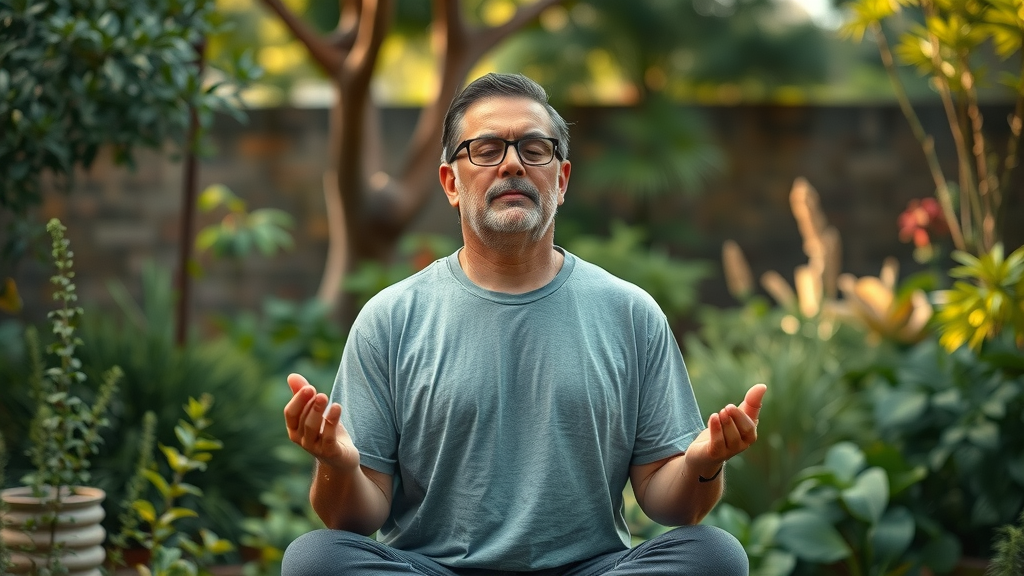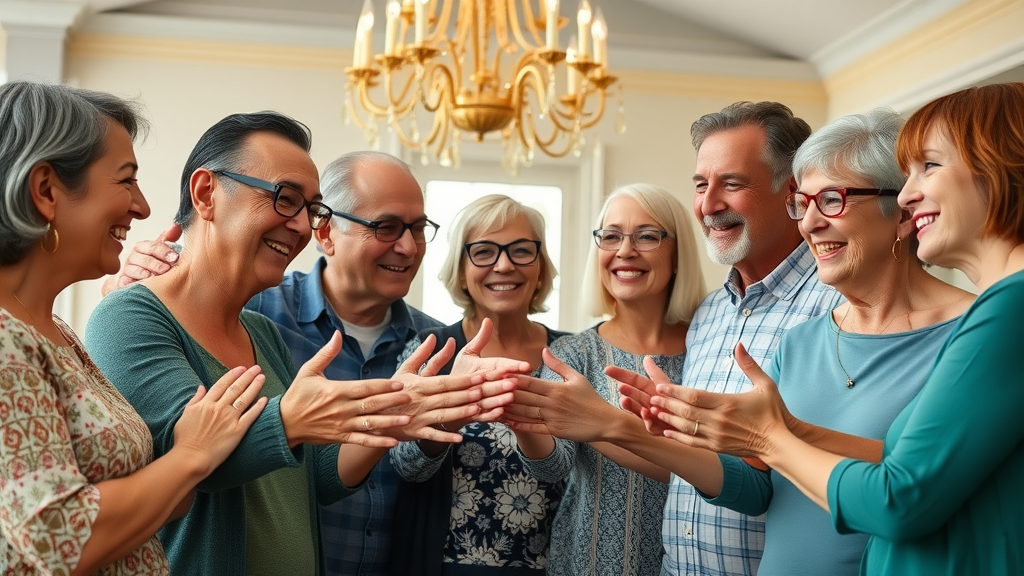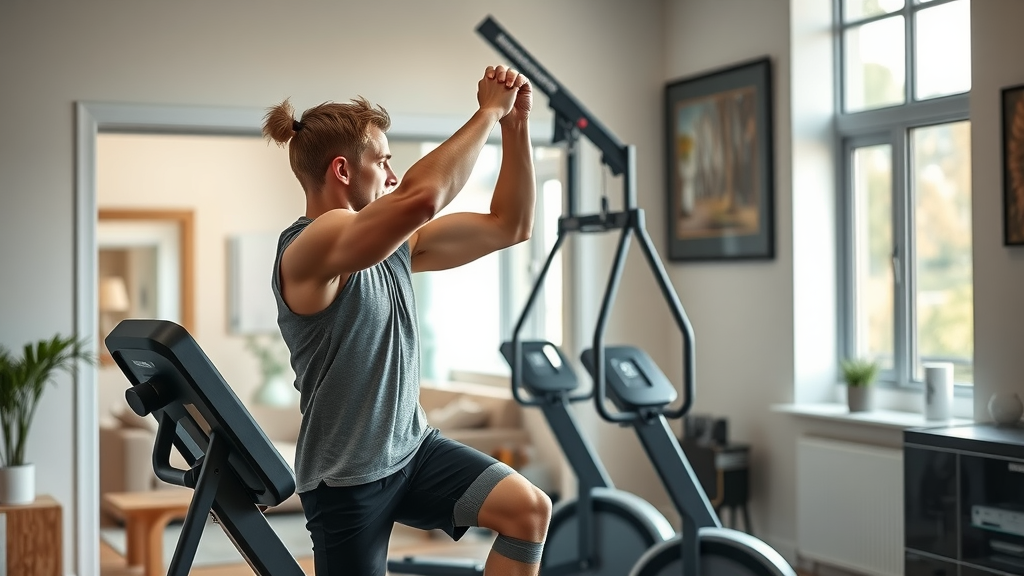Maintaining a positive body image in today’s society can be challenging, especially with the pressure from media and cultural norms. However, a startling fact is that more than 80% of Americans report dissatisfaction with their appearance. To combat this, adults should focus on a healthy lifestyle by exercising, which not only enhances physical health but also fosters mental well-being and resilience.
The Importance of Body Image in Today's Society

Today, body image plays a significant role in shaping an individual's self-esteem and overall mental health. A positive body image is associated with better psychological health and healthier lifestyle choices. Conversely, body dissatisfaction can lead to serious issues, including anxiety and eating disorders. This prevalence underscores why healthy body image is critical for achieving balance in physical and mental health.
Understanding Body Dissatisfaction and Its Impact
Body dissatisfaction, often influenced by unrealistic media portrayals, can severely affect mental health, leading to conditions like anxiety and depression. For instance, a negative body image may compel individuals to engage in unhealthy behaviors such as extreme dieting or excessive exercising, attempting to fit an unachievable ideal. Recognizing and addressing these influences is paramount to fostering a healthier and more positive self-image.
How Physical Activity Influences Body Image
The Role of Strength Training in a Healthy Lifestyle

Strength training is not only vital for physical health but also beneficial for mental well-being. It empowers individuals, boosts confidence, and promotes a positive body image by improving body composition and increasing muscle strength. Regular incorporation of such activities can dramatically transform one's self-perception, shifting focus from aesthetics to functionality.
Developing a Healthy Lifestyle by Exercising Regularly
Consistent physical activity is key to developing a healthy lifestyle. It enhances mood, reduces stress, and instills a sense of achievement. Adults who engage in regular exercise report improved self-esteem and body appreciation. Exercise should be seen not just as a means for weight loss, but as a holistic approach to wellness that nurtures body positivity and mental health.
Strategies for Maintaining a Positive Body Image
Overcoming Negative Body Image through Positive Thoughts
Cultivating positive thoughts is a powerful tool against negative body image. Techniques like mindfulness and cognitive restructuring can help shift negative perceptions toward self-compassion and body acceptance. By changing the narrative around how we perceive our bodies, we drive a positive body image transformation.
The Connection Between Physical Activity and Mental Health
There is a robust connection between physical activity and improved mental health outcomes. Engaging in regular exercise helps reduce symptoms of anxiety and depression by releasing endorphins, the body’s natural mood elevators. This biological boost aids in nurturing a positive body image and overall mental well-being.
Building Resilience to Maintain a Healthy Body Image

Coping Mechanisms for the Modern Adult
In a fast-paced world, building resilience is essential for maintaining a healthy body image. This involves adopting coping mechanisms such as meditation, which fosters an inner peace and acceptance. Developing resilience equips individuals to better face societal pressures and maintain a focus on personal health and wellness goals.
The Impact of Social Media on Body Perception
Social media can have a profound impact on how individuals perceive their bodies. The curated reality often presents idealized versions of physical beauty, leading to body dissatisfaction. Awareness and critical engagement with media can help mitigate adverse effects and allow individuals to cultivate a more balanced view of their bodies.
Practical Tips for Adults to Focus on a Healthy Lifestyle
Incorporating Physical Activity into Daily Routines

To maintain a healthy body image, adults should focus on integrating physical activity into their daily lives. Simple actions, such as taking stairs instead of elevators or a brisk walk during lunch breaks, can cumulatively enhance fitness levels and improve body perception. By making activity a natural part of everyday routines, individuals improve their health and outlook on body image.
Meal Planning for a Balanced Diet
"A healthy outside starts from the inside." - Robert Urich
A balanced diet complements exercise, providing necessary nutrients to support bodily functions and promote mental clarity. Meal planning ensures consistency in eating habits, reducing the reliance on unhealthy processed foods and unnecessary weight gain concerns. A nutritious diet supports not just physical health but also boosts mental resilience and self-esteem.
Answering Common Queries About Healthy Body Image
How can a person maintain a healthy body image?
A person can maintain a healthy body image by practicing self-acceptance and focusing on health rather than appearance. Involving oneself in physical activities that are enjoyable and setting realistic fitness goals can enhance body satisfaction.
How do exercises help in maintaining a positive body image?
Exercise contributes to a positive body image by promoting better health and improving mood through endorphin release. Activities like strength training and aerobics improve body composition, increasing an individual’s confidence and appreciation for their body’s abilities.
What steps do you take to maintain a positive view of your body?
Maintaining a positive view of your body involves embracing body diversity and practicing gratitude for what one's body can achieve. Engaging in healthy lifestyle habits, such as balanced nutrition and consistent exercise, further reinforces a self-assured body image.
Why is it important to maintain a healthy body composition and body image?
Preserving a healthy body composition is imperative for reducing the risk of chronic diseases and enhancing functional mobility. A healthy body image reinforces mental resilience and nurtures lower stress levels, vital for long-term well-being.
Benefits of a Healthy Lifestyle Beyond Body Image

Long-Term Gains for Physical and Mental Health
A healthy lifestyle extends beyond mere aesthetics. It encompasses the long-term benefits to both physical and mental health, promoting increased longevity, decreased risk of lifestyle diseases, and an enriched quality of life. Adopting such habits fosters holistic well-being.
Increased Energy and Vitality
Engaging in regular physical activity energizes the body and enhances vitality by improving cardiovascular health and muscular strength. The resulting stamina and alertness lead to productive daily life, reinforcing a positive body image and dynamic lifestyle.
Comparative Benefits: Aerobic vs. Anaerobic Exercise
| Exercise Type | Benefit |
|---|---|
| Aerobic Exercise | Improves cardiovascular health, aids in weight management. |
| Anaerobic Exercise | Enhances muscle strength, supports body composition. |
Common Myths about Body Image and Exercising

Dispelling Misconceptions Around Negative Body Image
Misconceptions about negative body image often stem from societal stereotypes and misinformation. Educating oneself about realistic body standards and celebrating body diversity can aid in dispelling these harmful myths. It's essential to rise above these superficial bases to promote genuine health and fitness.
The Truth About Eating Disorders and Body Image
Eating disorders are complex conditions influenced by psychological, social, and environmental factors, and not just the desire to achieve a certain body image. Understanding the multifaceted nature of these disorders is crucial for eradicating stigmas and promoting informed interventions.
Taking the First Steps Towards a Positive Body Image
"It is health that is real wealth and not pieces of gold and silver." - Mahatma Gandhi
Embracing health as a treasure is the initial step toward a positive body image. Prioritizing self-care through a balanced diet, regular exercise, and mindfulness helps to establish a foundation for enduring self-acceptance and appreciation.
Recognizing the Importance of Personal and Social Support

Building a Support System for Lasting Change
Having a robust support system is vital for sustaining a healthy body image. Encouragement from friends and family or joining supportive communities can significantly impact one’s journey towards body positivity. These relationships act as pillars that foster continuous motivation.
The Role of Community and Professional Guidance
Communities and professional guidance play a pivotal role in promoting body positivity. Access to resources such as counseling or support groups provides individuals with strategies to navigate body dissatisfaction and maintain a focus on a healthy lifestyle.
 Add Row
Add Row  Add Element
Add Element 



Write A Comment